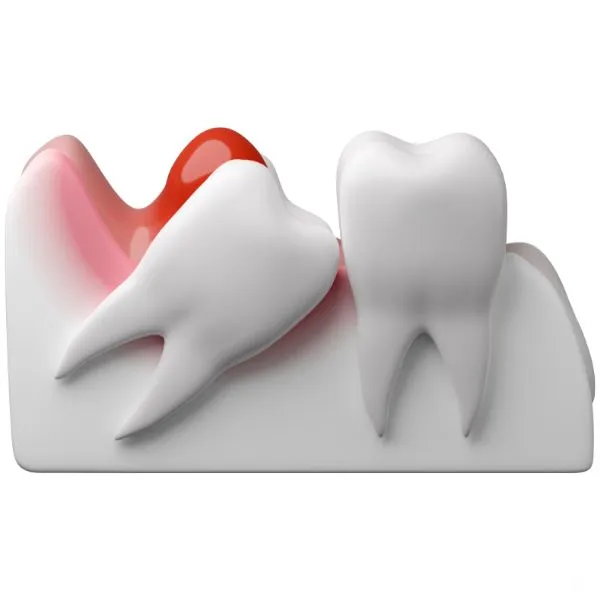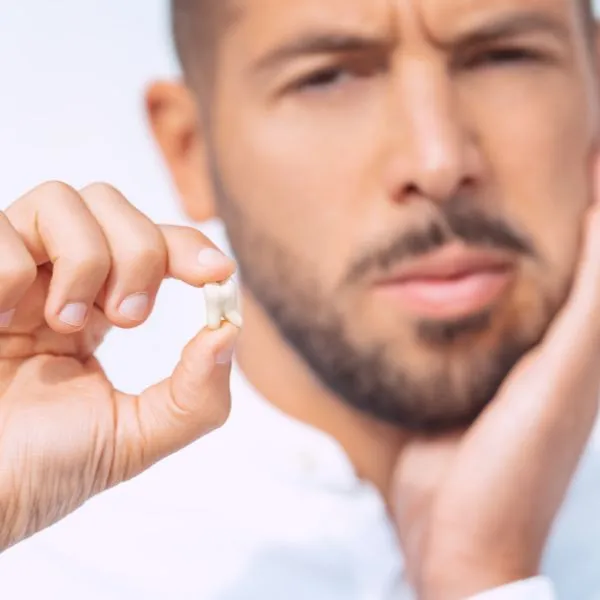Understanding Wisdom Teeth and the Need for Removal
Wisdom teeth are the final set of molars that most people get in their late teens or early twenties, are a common source of dental issues. While they once served a purpose for our ancestors who had larger jaws and diets that required more chewing power, today they’re often create problems due to the smaller size of our jaws, which can lead to impaction and misalignment.
Why Are They Called ‘Wisdom’ Teeth? : The term “wisdom” is derived from the age at which they typically appear, when a person is deemed to be wiser than they were in childhood, entering into adulthood.
The Role of Wisdom Teeth : In the past, wisdom teeth were very useful in helping our ancestors chew their diet of raw plants and meat. Today, with cooked food and cutlery, they are less needed.
Why Do Wisdom Teeth Cause Problems? : Modern human jaws are considerably small to fit these extra molars without causing crowding, misalignment, or impaction – a condition where the teeth don’t fully emerge from the gums and can lead to pain and infection.
To Keep or Not to Keep? : The decision to remove wisdom teeth is not always clear-cut. If they are healthy, fully erupted, positioned correctly, and do not interfere with other teeth, they can be left in place. However, problems often lead to the recommendation of removal.

Why Remove Wisdom Teeth?
- Preventing Overcrowding: Most of the time our jaws cannot accommodate these extra teeth. If left in place, wisdom teeth can push against other teeth, causing pain and misalignment.
- Impaction: Wisdom teeth that don’t have enough room to emerge or develop normally are termed ‘impacted’ and can lead to infection or cysts.
- Hygiene Difficulties: Partially erupted teeth can be hard to see and clean, leading to tooth decay and gum disease.
The Trouble with Impaction
Impacted wisdom teeth can cause significant pain and lead to serious complications.
- Damage to Adjacent Teeth: If an impacted wisdom tooth pushes against the second molar, it may damage the molar or increase the risk of infection.
- Cysts and Tumours: Cysts can form around the new teeth. If they aren’t treated, they can hollow out the jaw and damage nerves.
Risks Associated with Wisdom Tooth Extraction
Any surgical procedure comes with potential risks, and there is no exception wisdom tooth extraction.
- Dry Socket: This occurs when the blood clot at the site of the tooth extraction fails to develop or dislodges before the wound has healed.
- Infection: The risk of infection is present since the mouth is full of bacteria.
- Nerve Damage: There’s a slight chance of nerve damage, which can cause numbness or tingling.

Preparing For Extraction Procedure
Proper preparation can help ensure a smooth procedure and recovery.
Medical History Review: Your dentist will review your medical history to ensure it’s safe to proceed with the extraction.
Fasting: You may be asked to fast if you’re going to be under general anaesthesia.
Aftercare is essential for healing:
The removal of wisdom teeth marks the end of one journey and the beginning of another. Proper aftercare is crucial for healing and can make a significant difference in your comfort and the speed of your recovery.
Immediate Aftercare: The First 24 Hours: The first day after surgery is critical for setting the stage for a smooth recovery:
- Bite Gently on a Gauze Pad: This will help control bleeding and allow a clot to form in the tooth socket.
- Apply Ice Packs: Swelling is normal, but ice can help minimize it. Apply ice for 15 minutes on, then 15 minutes off.
- Rest: Keep your head elevated and avoid any strenuous activity.
Pain Management: Pain varies from person to person, but managing it effectively can help you recover more comfortably:
- Take Prescribed Painkillers: Follow your dentist’s or surgeon’s instructions for any prescribed medication.
- Over-the-Counter Options: Ibuprofen can be effective for managing pain and reducing inflammation.
Oral Hygiene and Eating Habits: Keeping your mouth clean and adjusting your diet are key components of aftercare:
- Rinse with Salt Water: After the first 24 hours, gently rinse with warm salt water several times a day to reduce swelling and relieve pain.
- Soft Foods: Stick to soft foods like yogurt, pudding, or soup initially. Gradually reintroduce solid foods as you feel comfortable.
Activity Level and Routine: Getting back to your normal routine should be a gradual process:
- Limit Physical Activity: Avoid vigorous exercise for the first week, as it can increase bleeding and swelling.
- Normal Brushing: Resume brushing your teeth the next day, but be gentle around the surgical sites.
When to Call Your Dentist: Be aware of signs that may indicate a need for follow-up care:
- Persistent Pain or Bleeding: While some pain and bleeding are normal, if they persist beyond a few days, contact your dentist.
- Signs of Infection: Fever, pus from the wound, or excessive swelling could indicate an infection.
Long-Term Care: Even after you’ve healed, it’s important to maintain good oral hygiene to prevent future dental issues.
It’s important to know when to get help:
- Persistent Pain or Bleeding: Some pain and bleeding are normal, but if they persist, you should contact your dentist.
- Signs of Infection: Fever, pus from the wound, or excessive swelling could indicate an infection.
What Are You Waiting For...
Make An Appointment
Book Appointment Now..
Our location
901-B, Ninth Floor, Nandan ProBiz, Sai Chowk Road, Balewadi, Pune - 411045
Opening Hours
Mon-Fri: 9am-10pm
Sat-Sun: 9am-10pm
Contact
Phone: +91 800 020 1040
Email: info@belleza.guru

